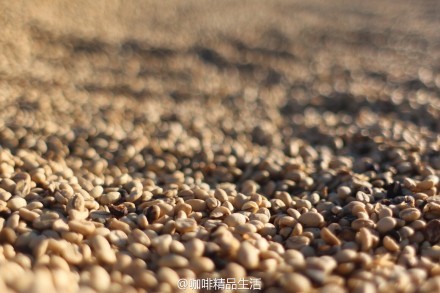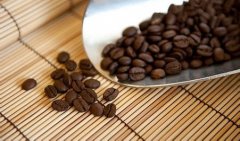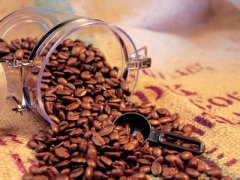Basic knowledge of Fine Coffee beans

Caffeine: Caffeine is the most noticeable of all coffee ingredients. It belongs to a kind of plant xanthine (animal muscle component). Its nature is the same as theobromine contained in cocoa. The theophylline contained in green tea is the same. After baking, the percentage of reduction is extremely small. The effect of caffeine is extremely extensive, which will affect various parts of the human brain, heart, blood vessels, gastrointestinal tract, muscles and kidneys. An appropriate amount of caffeine will stimulate the cerebral cortex, promote sensory judgment, memory and emotional activities, make the myocardial function more active, expand blood vessels and enhance blood circulation. And improve metabolic function, caffeine can also reduce muscle fatigue, promote digestion (digestive food) secretion. In addition to this, because it also promotes kidney function to help the body expel excess sodium ions (chemical components that hinder water molecule metabolism), caffeine will not accumulate in the body like other narcotic and excitatory substances (narcotic drugs, oils (oily foods), paint solvents, stimulants, etc.), and will be excreted in about two hours. Coffee flavor in the biggest special burn-bitter, is caused by caffeine.
Tannin acid: After extraction, tannin acid will turn into a pale yellow powder, which is easy to blend into water. After boiling, it will decompose and produce pyrochloric acid, which will make the coffee taste worse. If brewed well and put on for several hours, the coffee color will become thicker than just brewed, and it will not taste enough. Therefore, there will be a saying that "brewed well, it is best to drink it as soon as possible."
Fat: coffee contains fat, in the flavor of an extremely important role, analysis found that coffee contains fat is divided into many kinds, and the most important of which is acidic fat and volatile fat, acidic fat refers to fat contains acid its strength will vary depending on the type of coffee, volatile fat is the main source of coffee aroma. Roasted coffee beans contain fat which, when exposed to air, undergoes biochemical changes that make them less flavorful.
Protein (protein food) : The main source of calories is protein, and like coffee brewed by dripping, most of the protein will not dissolve out, so the nutrition obtained by coffee drinking is limited, that is, coffee will become a slimming (slimming food).
Sugar: In the absence of sugar, in addition to the bitter taste of caffeine and the sour taste of tannin, you will also feel the sweetness, which is caused by the sugar contained in the coffee itself. After roasting, most of the sugar will turn to caramel, giving the coffee its distinctive brown color.
Minerals: lime, iron (iron food) quality, sulfur, sodium carbonate, phosphorus, chlorine, silicon, etc., because the proportion of very little impact on the flavor of coffee is not large, combined to bring only a little astringency.
Coarse fiber: The fiber of raw beans will be carbonized after roasting. This caramelization of carbon and sugar combines with each other to form the color of coffee, but the powdered fiber will bring a considerable degree of influence on coffee flavor. Therefore, we do not encourage the purchase of powdered coffee beans, because it is less able to taste the flavor of coffee.
Coffee bergamot: The color, aroma, and taste of coffee are caused by complex chemical changes that occur during the roasting process. Therefore, raw beans must undergo appropriate chemical procedures to achieve the most balanced state of its essential ingredients in order to be considered the best baked beans. Coffee aroma changes with heat, so roast time should be as short as possible, and heat control can make coffee beans produce effective chemical composition of the minimum temperature, that is, the shortest process time and heat, so that coffee beans produce the most suitable composition ratio.
Aroma: Aroma is the life of coffee quality, but also the best performance of coffee production process and roasting technology, the climate of the production place, elevation, variety, refining treatment, harvest, storage, whether the roasting technology of the consumer country is appropriate, etc., are the conditions that control the aroma of coffee beans. The aroma of coffee was proved to be composed of hundreds of volatile components such as acids, alcohols, aldehydes, ketones, esters, sulfur compounds, phenols and nitrogen compounds. Roughly speaking, fat, protein, and sugar are important sources of aroma, while lipid components will blend with the bitterness and sourness of coffee to form a smooth taste. Therefore, the disappearance of aroma means that the quality is poor, and the relationship between aroma and quality is extremely close.
Important Notice :
前街咖啡 FrontStreet Coffee has moved to new addredd:
FrontStreet Coffee Address: 315,Donghua East Road,GuangZhou
Tel:020 38364473
- Prev

Knowledge of boutique coffee beans introduction to three types of coffee beans
At present, the main species of coffee plants growing in different regions of the world include the following: ARABICA/ROBUSTA/LIBERICA/DEWEVREI/STENOPHILLA/CONGENSIS/ABEOKUTAS/KLAINII/ZAANGUEBARIAE/RACEMOSA. Among them, the most commonly used coffee is divided into three categories: small seed coffee beans (Arabica) and medium seed coffee beans (Robusta).
- Next

Manual inspection of defective beans for hand selection of high-quality coffee beans
With reference to the origin and grading, grab the raw beans with your hands and check their appearance. The feeling of the hand is very important. Judging from the appearance of raw beans, their quality must have some experience, at the same time, it is difficult to set standards. The color has no difference in uniform light green, with luster. Also take into account the changes in color after harvest. The shape requires uniform and neat particles, and there should be no deformed beans.
Related
- Guji coffee producing area of Guji, Ethiopia: Humbela, Shakiso, Wulaga
- What is the most expensive variety of Qiloso in BOP multi-variety group?
- How to store the coffee beans bought home?
- Why are Yemeni coffee beans so rare now?
- Ethiopian Sidamo all Red Fruit Sun Sun Santa Vini Coffee beans
- SOE is mostly sour? What does it mean? Is it a single bean? what's the difference between it and Italian blending?
- Is Italian coffee beans suitable for making hand-brewed coffee?
- How to choose coffee beans when making cold coffee? What kind of coffee beans are suitable for making cold coffee?
- Just entered the pit to make coffee, what kind of coffee beans should be chosen?
- Can only Japan buy real Blue Mountain Coffee? What are authentic Jamaican Blue Mountain coffee beans?

